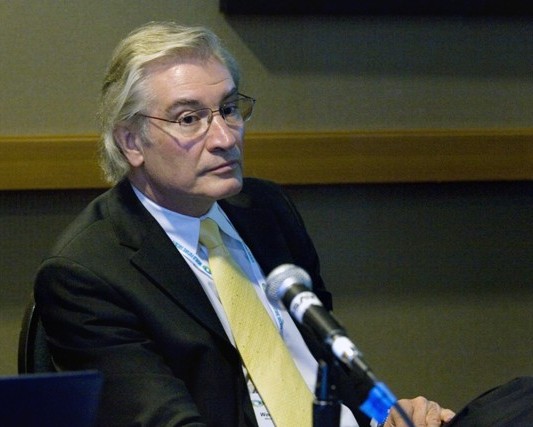 |
by Jerome C. Glenn, CEO The Millennium Project and UIA Active Member
Share. The Millennium Project is a global participatory think tank that produces the annual "State of the Future" reports, the "Futures Research Methodology" series, Global Futures Intelligence System, and related software, and special studies. The Millennium Project has 49 Nodes (an MP Node is a group of institutions and individuals that connect global and local perspectives) around the world that identify participants, translate questionnaires and reports, conduct interviews, initiate and conduct special research, workshops, symposiums, and advanced training. The Millennium Project’s mission is to improve thinking about the future and make it available through a variety of media for feedback to accumulate wisdom about the future for better decisions today.
It was founded in 1996 after a three-year feasibility study with the United Nations University, Smithsonian Institution, Futures Group International, the American Council for the UNU, and funded by the US Environmental Protection Agency, UNDP, and UNESCO. It is now an independent non-profit global organization that has included the forecasts and insights of over 4,000 futurists, scholars, business planners, and policy makers who work for international organizations, governments, corporations, NGOs, and universities. It has received funds from UN organizations, multinational corporations, universities, foundations, and the governments of Argentina, Azerbaijan, Chili, Dominican Republic, Egypt, Kuwait, Montenegro, South Africa, South Korea, and the United States.
Thus far, it has created a system for people to think together about the future with its 49 Nodes and Real-Time Delphi software for rapid assessment and feedback. It has created a framework to understand and track global change via 15 Global Challenges updated in the annual State of the Future reports. It also contributes to education, having trained some 200 Interns from over 30 countries.
An estimated 1,000 universities today use MP materials. It created an inclusive and participatory system to measure change called the State of the Future Index both for global and national indexes. It also produces Futures Research Methodology, the largest collection of methods to explore the future: 37 Methods, 39 Chapters, 1,300 pages, peer reviewed, and the Global Futures Integration System that brings all these together.
The Global Futures Integration System (GFIS) is a collective intelligence system to support global foresight. It is available at www.themp.org. The Millennium Project defines collective intelligence as: an emergent property from synergies among three elements: 1) data/info/knowledge; 2) software/hardware; and 3) experts and others with insight that continually learns from feedback to produce just-in-time knowledge for better decisions than any of these elements acting alone.
GFIS contains all of The Millennium Project’s 10,000+ pages of Futures
Research and data generated over the past seventeen years. It also contains Futures Research Methodology’s thirty-nine chapters totaling 1,300 pages of internationally peer-reviewed methods for exploring the future. Users are able to comment and suggest improvements any part of this material. A center piece of GFIS is the 15 Global Challenges (the general public invited to share insights to these at http://www.millennium-project.org/millennium/challenges.html), each with the following menu:
1.Situation Chart: Current Situation, Desired Situation, and Policies to Address the Gap
2.Overview: one-page summary and regional considerations, followed by hundred to three hundred pages of detailed content
3.Digest: news articles, scanning items, and updates to the challenge by day, week, month, and year
4.Updates: latest edits to the challenges with sources that triggered them
5.Scanning: important information with ability for users to annotate and rate their relevance
6.News: latest news items, again giving users the ability to rate their relevance, and identify their sources
7.Real-Time Delphi (RTD) Survey: to which questions may be added at any time, and answers added to a situation chart and elsewhere
8.Discussion: a blog-like area where subscribers and reviewers discuss questions they would like to explore
9.Comments: comments by anyone about the situation chart, overview, and so on, organized by time.
10.Models: interactive computer models, mathematical as well as rules-based and conceptual
11.Resources: listing websites, books, videos, presentations, and papers/articles
For more information see “Collective Intelligence and an Application by The Millennium Project,” in the Fall issue of the World Future Review, 201 5(3) 235-243 or visit the main website at millennium-project.org and themp.org.